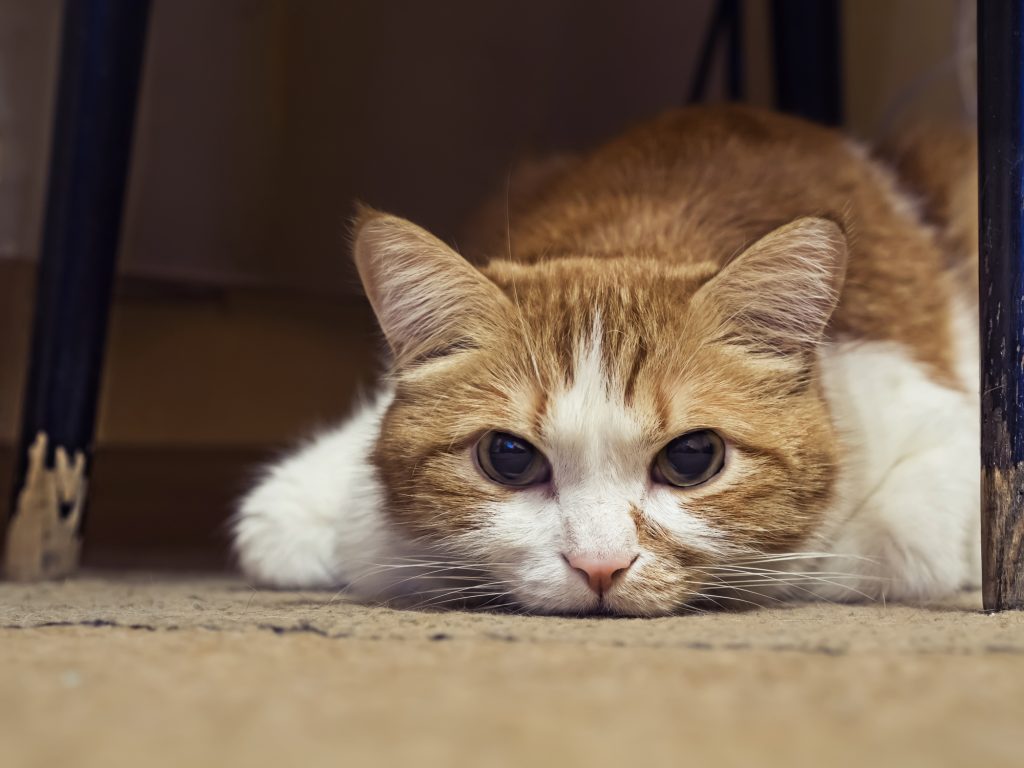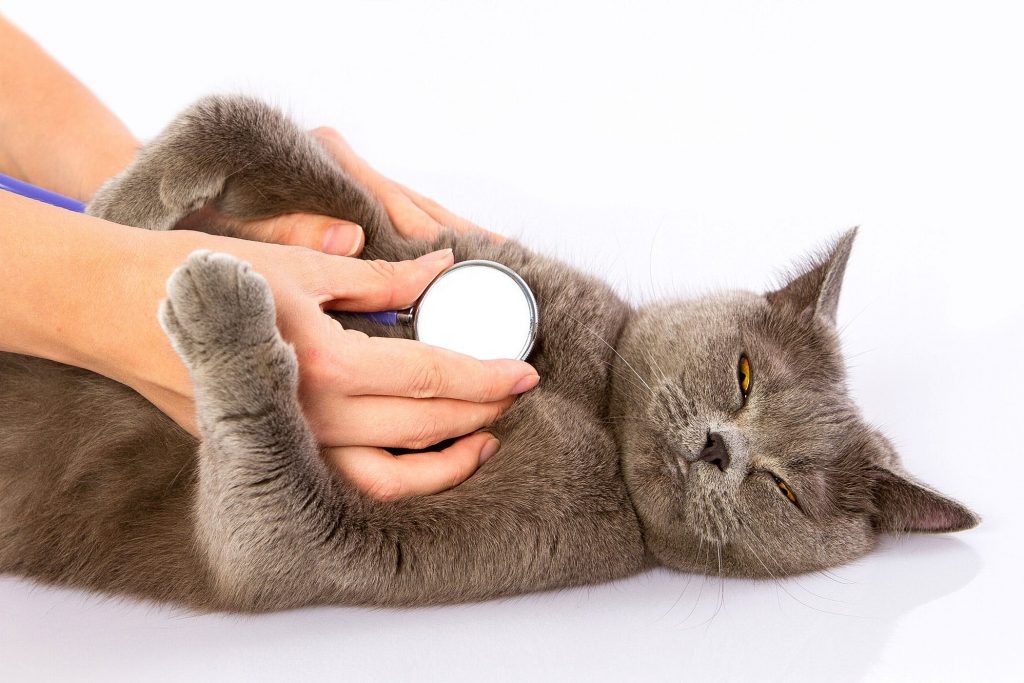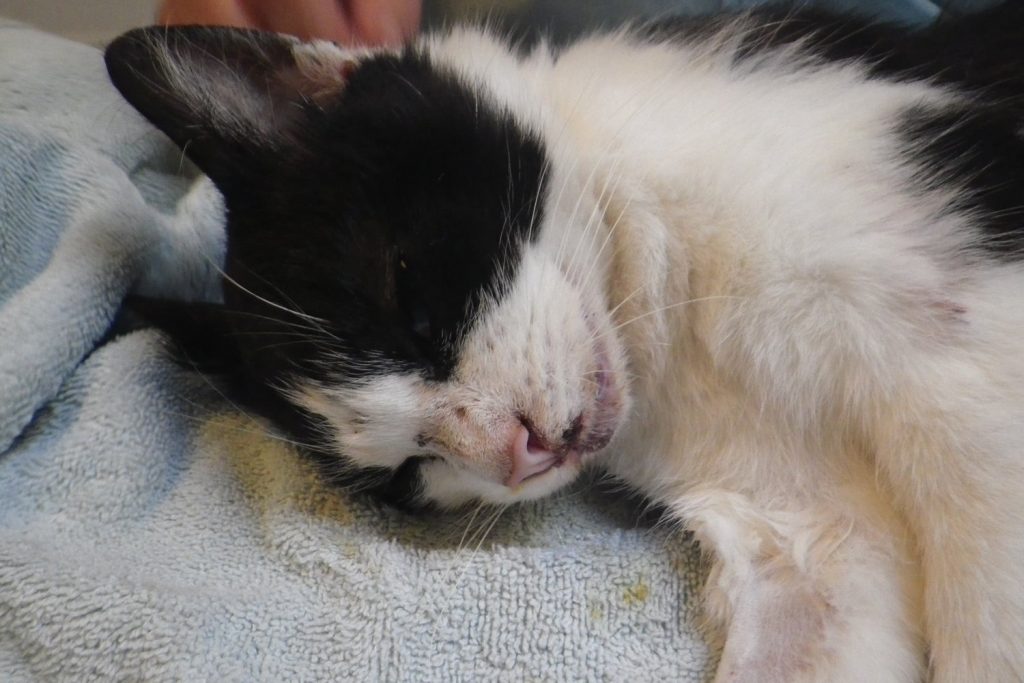Carbon Monoxide is basically a poisonous gas which tends to be toxic and harmful to all living species. Most cases of carbon monoxide poisoning happen to humans and there is little news about poisoning from this chemical in animals like cats. Due to its colorless and odorless characteristics, carbon monoxide may impose a great danger to your pets. Generally, carbon monoxide poisoning is life-threatening, so it is better to know the signs and symptoms of carbon monoxide poisoning in cats.
Basically, knowing this will help you to identify if your pet is already poisoned by carbon monoxide. Moreover, having an understanding of this will also save your cat from the unnecessary incident. Check below for the signs and symptoms of cat poisoning from carbon monoxide.
Different Symptoms of Carbon Monoxide Poisoning in Cats
Here are the common signs and symptoms of carbon monoxide poisoning in cats that you must have to learn. This will definitely help you to protect your cat from the dangerous effect of carbon monoxide.
1. Weakness or Lethargy
Basically, lethargy or lack of energy is one of the symptoms of carbon monoxide poisoning in cats. Cats experiencing weakness or lethargy primarily indicate that they are not really feeling well. Usually, cats that are ill may have behavioral changes and they try to avoid any contact with the humans most of the time. The lethargic cats can be found mostly inside an enclosed area.

Generally, the felines have the ability to hide any signs of the illness effectively. This basically means that the cats are excellent creatures in pretending to be under a normal state even if they are really not. Being a good actor in the felines may also be a factor for them to become very ill.
Key points to remember:
- Once the cat is lethargic it definitely means that he is a sick cat
- Senior cats have a higher possibility of experiencing bodily changes and being poisoned by carbon monoxide may slow them down especially when they are suffering from joint diseases
What to do?
It is actually better if you have an idea about the normal behavior of your cat. Once you already observe any different behaviors that your cat is doing, immediately call the veterinarian. Just a friendly advice, in any kind of situation or cause of lethargy, whether it is one of the symptoms of carbon monoxide poisoning or not, take the lethargic animal to the vet right away. This is for the purpose of providing your cat with a possible life-saving treatment.
2. Sudden vomiting
Carbon monoxide poisoning for humans and pets can be characterized by nausea. And, most likely, a sudden episode of vomiting is one of the symptoms of carbon monoxide poisoning in cats. Actually, vomiting is normal in cats yet, it is not a normal phenomenon for them to experience it.
However, vomiting in cats involves two major categories which are the chronic and acute vomiting. Basically, chronic vomiting is cat’s vomiting that usually follows regularity or a pattern. For example, the cat may vomit once or twice for each occurrence. Meanwhile, you may say that it is acute vomiting once a cat that does not actually vomit begins to do so.
With acute vomiting, the cat generally needs immediate care. Yet, chronic vomiting in cats may also need seeking the vet. The difference is that in chronic vomiting, it is not an urgent need. But, in case of carbon monoxide poisoning, once you notice that the cat already vomits and seems lethargic inside a closed area, take out the cat from that place immediately and take him to the vet.
3. Difficulty of breathing
Inhalation of the carbon monoxide may generally affect the lungs of the cats. And due to this, the cat may not be able to breathe in enough oxygen causing them to breathe harder. That’s why, when you notice your cat breathing in a very hard way, it means that it is one of the symptoms of carbon monoxide poisoning.
Generally, the difficulty of breathing in both humans and cats may be a life-threatening situation. Because of that, it is an essential thing to seek veterinarian immediately. Once you’re there at the vet’s clinic, be honest in giving accurate information to the vet about your cat’s health-related problem. Tell the veterinarian the health history of your cat, the onset of symptoms, and the possible situations that might trigger this health-related condition.
Veterinarian’s examination:

At the moment your cat had been examined by the vet, he will check the way your cat breathes and at the same time listen to the cat’s chest. The vet will look for any pieces of evidence of the presence of fluid within the lungs or any murmur sounds within the heart of your cat. Aside from that, the veterinarian will also check the color of the gums of your cat. Generally, the color of the cat’s gum is a great indication of the oxygen delivered to the organs or the number of blood cells present.
Moreover, your cat may also be requested to cough out. The vet may do this by pressing on the cat’s windpipe. In case the veterinarian notices that your cat is suffering from the extreme difficulty of breathing, the vet will give oxygen to your cat. Doing this will aid the cat to breathe normally before performing any further testing.
Standard test:
Testing to address the difficulty of breathing as one of the symptoms of carbon monoxide poisoning in cats may include complete blood count, feline’s urine analysis, and their biochemical profile. This will basically determine the possible cat infection or low count of the red blood cells. In addition to this, the standard testing for the difficulty of breathing will also reveal the abnormality of functioning within the cat’s internal organs.
Aside from that, the veterinarian will also get a blood sample of your cat in order to analyze the amount of oxygen and carbon dioxide in your cat’s internal system. The blood sample may also be a big help in determining any presence of carbon monoxide within the cat’s blood. Another test that can be performed through the blood samples is the heartworm test.
Other diagnostic examinations:
X-RAY and CHEST ULTRASOUND
These two diagnostic tools aim to test if there is an enlargement of the cat’s heart which will primarily result in heart failure. Moreover, x-ray and chest ultrasound for felines may also help to check if their lungs are normal. The veterinarian can also use these methods in examining the internal structure of the cat’s abdomen. In case, the veterinarian notices any fluid accumulation within the cat’s chest, lungs or abdomen, some fluids will be surely extracted for further analysis.
ECG or ELECTROCARDIOGRAM
The ECG basically measures the heart’s rhythm and electrical activity. Both of such heart functions are determining factors for the normal operation of the heart. This method is most likely to be used for felines suffering from a heart problem.
RHINOSCOPY and BRONCHOSCOPY
In the process of rhinoscopy and bronchoscopy, a small camera or endoscope may be used to have a closer look within the nose or cat’s airways. In addition to the use of the endoscope in the course of cat’s examination, the veterinarian may also get some fluids and cells from your cat to undergo biopsic analysis.
4. Seizures
One more symptom of carbon monoxide poisoning in cats is the disturbances in their reflexes. It is actually very common to observe seizures of cats suffering from carbon monoxide poisoning. Cats may usually have seizures once there is a loss of oxygen within their brain. Moreover, seizures in cats may also indicate a serious health condition.
Generally, seizures in cats involve different forms which include the following:
GENERALIZED or GRAND MAL SEIZURES
Convulsions, abnormal vocalizations, limb rigidity or paddling, and the loss of control for urinary or bowel movement are the main characteristics of this type of feline seizure. Generally, the grand mal seizure in cats can happen alone or in groups. Moreover, the occurrence of this feline seizure usually lasts for about a minute or two.
STATUS EPILEPTICUS
This is the type of feline seizure that can last for a little bit longer. Cats may experience this seizure for about 5 to 10 minute time. Once your cat suffers from status epilepticus, it basically calls for a medical emergency which needs to take him to the veterinarian immediately. Perhaps, after the vet’s mitigation for its onset, you also take your cat to the vet to have a complete checkup and diagnosis.
PARTIAL SEIZURES or ABSENCE SEIZURES
The other type of seizures as one of the symptoms of carbon monoxide poisoning in cats is the partial seizures or absence seizures. This seizure type is characterized by the cat’s tail and shadow chasing, biting, or aggressing.
However, the problem with the onset of seizures in felines is that it is generally brief making it unnoticeable. But, the cat may behave abnormally after a seizure attack. This is commonly known as the postictal phase. Basically, during this phase, the cat may either show one or more of the following signs.
Those may include too much tiredness or excitement, abnormal pacing, or binge eating and drinking. Once these signs are noticeable, immediately call the vet. Getting the cat outside so that he can breathe more air is one of the good things to do. Aside from that, it is better to avoid taking the animal suffering from seizure from one place to another.
5. Gingivitis and stomatitis
Both gingivitis and stomatitis are kinds of tissue inflammation. The gingivitis is basically the inflammation of the gums and it is the earliest phase of the periodontal problems. On the other hand, the stomatitis is a general inflammation of the tissues within the mouth including the gums, tongue, inner lips, and the mouth floor and roof. Basically, these two tissue inflammations are also included as symptoms of carbon monoxide poisoning in cats.
Once you notice a thin red line within the edge of the cat’s inflamed gums, this is known as feline’s gingivitis. It basically leads to swollen tissues of the cat’s gums and most of the time, halitosis. The inflamed gums will also bleed during feline’s tooth brushing session.
Moreover, involving the majority of the oral cavity, the stomatitis is more severe. It is obviously painful most of the time and may cause reduced appetite on cats.
6. Hearing loss
Basically, hearing loss in cats is caused by some medications like antiseptics and chemotherapy drugs. Aside from that, medications that have the ability to take off excess body fluids can also a factor of feline’s deafness. Some heavy metals including the lead, arsenic, and mercury may also lose the hearing ability of cats. Moreover, the feline’s deafness is also one of the symptoms of carbon monoxide poisoning in the cat.
Yet, it is very hard to distinguish the signs of hearing loss in cats because it gives a subtle sign. This means that most pet owners may be unaware of this change. Besides, you may try to consider the following signs as it may indicate the early signs of feline’s deafness:
- Unable to respond on appropriately on daily sounds that generally elicits a response; for example, shaking a full bag of cat treats
- Cannot hear your footsteps as you come near
- Tend to become a sound sleeper
- Doing the meow sounds too loud
- Inability to respond when being called
7. Loss of consciousness
Actually, loss of consciousness is one of the symptoms of carbon monoxide poisoning in cats within the final stage of the acute phase. In humans, the carbon monoxide poisoning can result in death once they come to a point that the brain already doesn’t know what’s wrong. In case your pet cannot be roused, immediately take him to the veterinarian as this is a medical emergency.

Generally, carbon monoxide poisoning that occurs inside a confined room having gas heating systems like the garage or running vehicles may most likely to affect pets such as dogs and cats. In case you have a feeling that a high amount of carbon monoxide affects your pet, take him to the vet to give him the appropriate treatment options.
What Causes Carbon Monoxide Intoxication in Cats?
There are actually various factors that can trigger the symptoms of carbon monoxide poisoning in cats. These may generally include the following:
- Aeroplane cargo space
- Automobile exhaust
- Barbeque grills
- Furnaces
- Fireplaces with gas
- Gas leaks in rooms with poor ventilation
- Water heaters with gas
- Kerosene lanterns
- Kerosene space heaters
- Ovens
- Propane heaters
- Smoke
How to Diagnose Carbon Monoxide Poisoning in Felines?
Generally, the moment you observe any symptoms of carbon monoxide poisoning in cats, it is a must to rush your pet into the veterinarian. The veterinarian will conduct physical analysis on your cat so that all the possibilities of poisoning may be ruled out. Moreover, always be prepared for the queries that the vet may ask you regarding the incidence of carbon monoxide poisoning of your cat.
Keep in mind that sleeping near the fireplace may also be a factor of carbon monoxide poisoning. Additionally, the veterinarian may also inquire for other pets or family members that exhibiting the same symptoms. If so, that could possibly one of the symptoms of carbon monoxide poisoning due to leakage inside the house.
Ways in Treating Carbon Monoxide Intoxication in Felines
Initially, the first step on treating felines suffering from carbon monoxide poisoning is to take them out into open space that has fresh air. But, always remember that taking your cat to the veterinarian is the best and safest way to treat your cat suffering for carbon monoxide poisoning. The veterinarian may have to advise the following possible treatments:
* Supplementation of oxygen
Generally, the main objective of this treatment is to immediately provide the blood with a sufficient amount of oxygen. A breathing mask of oxygen chamber may be used to deliver oxygen on your cat. Moreover, offering respiratory support for felines having a high amount of toxicity may need the use of a mechanical ventilator. Some medical personnel may use the pulse oximeter for oxygen level monitoring.
* Intravenous Fluid Therapy
In order to bring back the pH of the blood into the normal level, the cat may use intravenous fluid therapy. Aside from that, nutritional and electrolyte therapy may aid in the improvement of the cat’s breathing.
Basically, on carbon monoxide poisoning, cat’s hospitalization is still required in order for the blood oxygen levels to normalize. Also, take the cat into the veterinarian the moment you notice any symptoms of carbon monoxide poisoning in cats. Always keep in mind that early treatment may lead to complete feline’s recovery.
Final Thoughts
There are actually various symptoms of carbon monoxide poisoning in cats that you must have to be aware of. Generally, poisoning of cats from carbon monoxide may be characterized by body weakness, vomiting, the difficulty of breathing, seizures, inflammation of the tissues, hearing loss, and loss of consciousness. It is basically important to have, at least, a little bit idea about this so that you may be able to determine the health status of your cat.
Moreover, knowing these signs of poisoning may also be the best way to save your cat’s life from possible danger. At the same time, it is typically important to seek the assistance of a professional in addressing the health problems of your cat. Through this, it will be a channel for your feline companion to have a totally complete recovery after the unwanted carbon monoxide poisoning.

